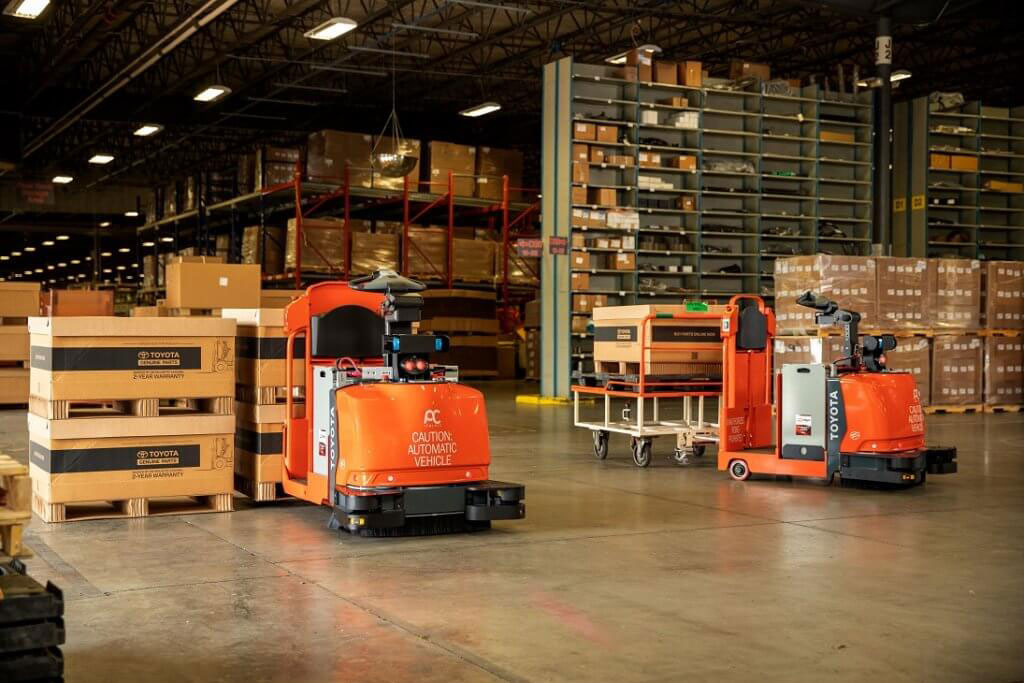Distribution and fulfillment centers are always looking for ways to maximize operational productivity and efficiency. The current COVID-19 pandemic, increasing e-commerce sales, and a limited labor pool have only intensified the need for companies to get more done in a shorter amount of time. Learn how to upgrade your warehouse for maximum efficiency.
To help stay competitive in today’s environment, distribution and fulfillment centers often invest in automated warehouse solutions and robots to increase efficiency. Here are four steps to the warehouse automation process and the different types of warehouse robots and what they do.
- First, start simple. Many companies begin by adding equipment designed to move products more efficiently. For example, conveyors and carousels can increase productivity by reducing the time to get a product from point A to point B.
- Next, reduce redundant tasks. The next step is to simplify specific tasks and procedures with software, machine learning, and analytics. For example, software can analyze and batch orders so employees can make one trip to a specific area to retrieve orders instead of taking many trips throughout the day.
- Give your employees assistance. To automate further, look for ways to assist your employees with warehouse tasks and procedures. For example, Automated Storage and Retrieval Systems (AS/RS) can retrieve items and put them away, increasing productivity by reducing order picking time.
- Finally, automate repetitive procedures. Advanced warehouse automation can replace labor-intensive, repetitive functions. For example, Autonomous Mobile Robots (AMRs) can conduct inventory counts at predetermined times or intervals to allow employees to focus on more value-added tasks.
Here’s a look at the various types of warehouse robots and their specific functions:
- Articulated Robotic Arms
- Use: Automate order fulfillment tasks.
- Function: Moves items from pallets for picking, packing, and shipping.
- Example: Robotic limbs with multiple joints.
- Automated Guided Vehicles (AGVs)
- Use: Automate simple transportation paths.
- Function: Transports items from point A to point B.
- Examples: AGVs on tracks. AGVs paired with sensors to avoid obstacles.
- Automated Guided Carts (AGCs)
- Like AGVs, but carry smaller loads.
- Automated Storage and Retrieval Systems (AS/RS)
- Use: Automate the retrieve and return process.
- Function: Retrieves goods for shipment. Returns items to their proper storage locations.
- Examples: Cranes that pick orders. Shuttles that move on fixed tracking systems.
- Autonomous Mobile Robots (AMRs)
- Use: Automate simple transportation paths. Automate inventory process. Automate teaching simple tasks.
- Functions: Transports inventory from point A to point B. Conducts inventory. Teaches and guides associates through a task.
- Examples: AMRs with maps and sensors. AMRs paired with RFID-tagged products. AMRs with collaborative abilities.
- Goods-to-Person technology (G2P)
- Use: Automate the delivery of items to picking stations.
- Function: Delivers products to areas where employees are waiting to fill orders.
- Example: Automated and software-driven systems requiring minimal human interaction.
- Unmanned Aerial Vehicles (UAV)
- Use: Real-time inventory visibility.
- Function: Provides inventory visibility in warehouses equipped with RFID technology.
- Example: Drones.
Are you interested in implementing an automated warehouse system in your distribution and fulfillment center? Our warehouse systems experts are eager to help. They know all the ins and outs of getting the most out of your warehouse space and design. Contact us today to get started.
Tags: automation, warehouse solutions
